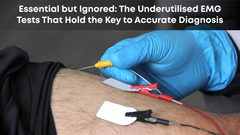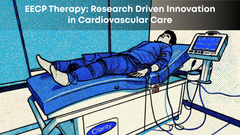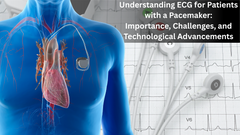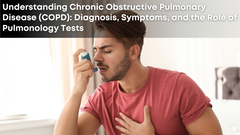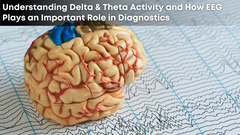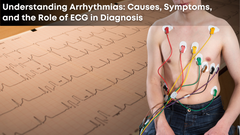Improving Accuracy Rates In Blood Pressure Measurement
We live in the digital age. Today, most of us are highly aware of what is going on around us and the world—all thanks to technology. Additionally, most of us are also highly aware of our health and staying fit and healthy. With the advent of wearables that can quickly measure SpO2 or blood oxygen saturation, ECG, and even blood pressure, it has become easy for us to monitor our health at any time.
However, most of these devices are not as accurate as we would want them to be. Additionally, wearables and off-the-counter blood pressure measurement devices can give readings that are off the charts simply because of the placement of the cuff, making their readings unreliable. High blood pressure puts us at risk for heart disease and stroke, which are leading causes of death worldwide.
What is blood pressure?
Our organs need a constant supply of blood to function. Blood circulation keeps our tissues, muscles and organs healthy—and keeps us alive. Additionally, blood circulation also helps our body get rid of waste.
The heart is responsible for pumping blood throughout our body. With each beat, blood is pumped into the circulatory system's large blood vessels (arteries) and transmitted throughout our body. Blood puts pressure on the walls of these blood vessels as it moves through them. Analyzing this value can give physicians valuable insights into your heart health and general well-being.
Clinicians analyze blood pressure using a unit called mmHg or millimeters of mercury. The reading is in a pair, with two values, usually written as 120/80 mmHg. These values are:
- • Systolic blood pressure: This is the value when your heart contracts (squeezes) and pumps oxygen-rich blood throughout your body.
- • Diastolic blood pressure: This is the value when the heart muscle relaxes. Diastolic values will always be lower than systolic values in normal circumstances.
What is normal blood pressure?
According to the American Heart Association, the normal blood pressure range for healthy adults is 120/80. This means that the systolic/diastolic blood pressure reading must be around 120/80 mmHg. Any value above this, but under 129/80 mmHg, is considered elevated blood pressure. Once an individual's blood pressure range crosses 140/90 consistently and even when at rest, the individual is considered to have high blood pressure and is called hypertensive.
What is high blood pressure or hypertension?
Hypertension is a common health condition where your blood pressure is high enough to eventually cause health problems such as heart disease in the long term. Blood pressure values may easily fluctuate according to the activity performed before measurements, such as showering, exercising, smoking and eating. If you are exercising, your blood pressure and heart rate can be high, but you're good if it normalizes in a few minutes.
Note: Always consult a doctor about your blood pressure. Machine readings and expert clinical diagnosis may differ. This means that even if your blood pressure monitor indicates that you have high blood pressure, it may be normal for you. But only an expert medical professional can make that diagnosis.
What are the symptoms of high blood pressure?
Most people do not know that they have high blood pressure, as high blood pressure or hypertension symptoms are common and easily misdiagnosed. These symptoms can include:
- • Headache
- • Fatigue
- • Vision problems
- • Chest pain
- • Difficulty breathing
- • Pounding in the ears, chest or neck
- • Nervousness
- • Trouble sleeping
- • Sweating
- • Nose bleed
Patients may also face numerous other problems or a combination of those listed above and may not attribute it to high blood pressure. This is why measuring blood pressure, and blood sugar are considered essential vital signs in any clinical setting. If you're over 40 and face any of these problems, visit your doctor or primary health clinic to get a checkup.
How is blood pressure measured?
Arterial blood pressure is monitored using a blood pressure monitor (also called a sphygmomanometer). There are many devices, methods and technologies used to measure blood pressure. These include:
This method involves using a manometer, an inflatable cuff and a stethoscope for measuring blood pressure. The cuff is placed at roughly the same height as the heart and is attached to a mercury-based or aneroid manometer. The cuff is inflated manually or automatically until the artery is occluded. Then, the stethoscope is used to listen to the brachial artery at the base of the cuff on the elbow. The pressure is released slowly and when the blood just starts to flow. The pressure at the first pounding sound (called the Korotkoff sound) is the systolic blood pressure. Pressure is released gradually until no sound can be heard, which is the diastolic reading. This method is considered the gold standard of blood pressure measurement in clinical settings.
Ambulatory blood pressure monitoring requires wearing a cuff for 24 hours. This cuff is connected to a small portable device that measures your blood pressure at specific times of the day and records the reading.
The modern oscillometric method observes the oscillations of the blood flow (pulse) using a sphygmomanometer cuff with electronic pressure sensors that measure, interpret and record these values. A variety of algorithms are used to estimate and apply these values and to record the systolic, diastolic and mean arterial pressure.
The NiBP method or the non-invasive blood pressure measure method measures blood pressure constantly by recording arterial blood pressure. A cuff is inflated to a lower inflation pressure while constantly sensing oscillations. This method is useful when the blood pressure is varying, especially during surgery or in the ICU.
Innovative patient monitors from Clarity Medical use a specialized NiBP algorithm that quickly calculates blood pressure through oscillation with lower inflation pressure, making measurement quick and easy. Lower inflation values also put less stress on the patient. Additionally, these devices also provide hospital staff multiple parameters that help them diagnose patients quickly and efficiently. With ECG/EKG, respiratory rate and EtCO2 displayed in real-time, health professionals can make more accurate, better informed decisions about the patient’s condition.
Additionally, our devices such as Spectra Smart+, Spectra Slim+, Spectra Gold+ and Recobro Vigile are built from the ground up to support critical care in ICUs. The devices showcase up to 7 distinct parameters that include SpO2, ECG/EKG, Respiratory rate, NiBP, IBP, EtCO2 and body temperature. These devices also offer real-time remote viewing with 2-way communication that helps medical professionals stay safe during these trying times.
This stepless and quick BP measurement method is being employed at hospitals worldwide to rapidly provide accurate readings.
Final Thoughts
Hypertension affects nearly 26% of the world population—making it one of the most common diseases around! However, accurate high blood pressure measurement is essential for diagnosis and early disease prevention. Clarity Medical's innovative research center is committed to your good health. Our scientists are constantly devising new techniques that measure blood pressure accurately to help you stay healthier. Our world-class patient monitors, such as the Spectra Smart+, can diagnose both NiBP and IBP along with other parameters such as ECG, temperature, SpO2, EtCO2 and more! Contact Clarity Medical to know more about their range of products and solutions for your clinic and home!





